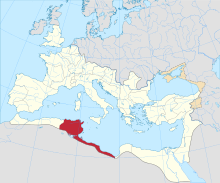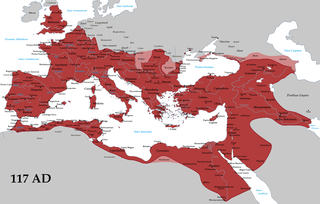
Roman Britain was the area of the island of Great Britain that was governed by the Roman Empire, from 43 to 410 AD. It comprised almost the whole of England and Wales and, for a short period, southern Scotland.

Poitiers is a city on the Clain river in west-central France. It is a commune and the capital of the Vienne department and also of the Poitou. Poitiers is a major university centre. The centre of town is picturesque and its streets include predominantly historical architecture, especially religious architecture and especially from the Romanesque period. Two major battles took place near the city: in 732, the Battle of Poitiers, in which the Franks commanded by Charles Martel halted the expansion of the Umayyad Caliphate, and in 1356, the Battle of Poitiers, a key victory for the English forces during the Hundred Years' War. This battle's consequences partly provoked the Jacquerie.
A Forum is a place for discussion.

Camulodunum, the Ancient Roman name for what is now Colchester in Essex, was an important town in Roman Britain, and the first capital of the province. It is claimed to be the oldest town in Britain. Originally the site of the Brythonic-Celtic oppidum of Camulodunon, capital of the Trinovantes and later the Catuvellauni tribes, it was first mentioned by name on coinage minted by the chieftain Tasciovanus sometime between 20 and 10 BC. The Roman town began life as a Roman Legionary base constructed in the AD 40s on the site of the Brythonic-Celtic fortress following its conquest by the Emperor Claudius. After the early town was destroyed during the Iceni rebellion in 60/1 AD, it was rebuilt, reaching its zenith in the 2nd and 3rd centuries. During this time it was known by its official name Colonia Claudia Victricensis, often shortened to Colonia Victricensis, and as Camulodunum, a Latinised version of its original Brythonic name. The town was home to a large classical Temple, two theatres, several Romano-British temples, Britain's only known chariot circus, Britain's first town walls, several large cemeteries and over 50 known mosaics and tessellated pavements. It may have reached a population of 30,000 at its height. It was not until the late 18th century that historians realised that Colchester's physical Brythonic and Roman remains were the city mentioned in ancient literature as "Camulodunum".
A tutelary is a deity or spirit who is a guardian, patron, or protector of a particular place, geographic feature, person, lineage, nation, culture, or occupation. The etymology of "tutelary" expresses the concept of safety, and thus of guardianship.
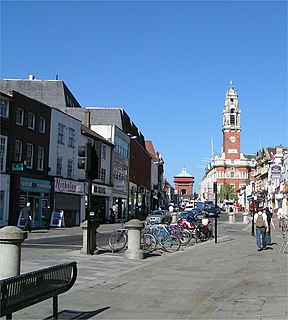
Colchester is a historic market town and the largest settlement within the borough of Colchester in the county of Essex. Colchester was the first Roman-founded city in Britain, and Colchester lays claim to be regarded as Britain's oldest recorded town. It was for a time the capital of Roman Britain, and is a member of the Most Ancient European Towns Network.

Dorchester is the county town of Dorset, England. It is situated between Poole and Bridport on the A35 trunk route. A historic market town, Dorchester is on the banks of the River Frome to the south of the Dorset Downs and north of the South Dorset Ridgeway that separates the area from Weymouth, 7 miles (11 km) to the south.

Maryport is a town and civil parish in the Allerdale borough of Cumbria, England. Historically in Cumberland, it is located on the A596 road 6 miles north of Workington, and is the southernmost town on the Solway Firth. The town of Silloth is to the north on the B5300 coast road, which passes through the villages of Allonby, Mawbray, Beckfoot, and Blitterlees. The county town of Carlisle lies 26 mi (42 km) to the north-east. Maryport railway station is on the Cumbrian Coast Line. Maryport lies at the northern end of the former Cumberland Coalfield.
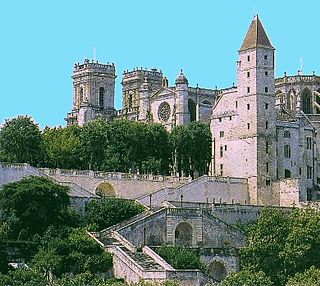
Auch is a commune in southwestern France. Located in the region of Occitanie, it is the capital of the Gers department. Auch is the historical capital of Gascony.

Vienne is a commune in southeastern France, located 35 kilometres (22 mi) south of Lyon, on the river Rhône. It is only the fourth largest city in the Isère department, of which it is a subprefecture, but was a major center of the Roman empire.

Romans-sur-Isère is a commune in the Drôme department in southeastern France.
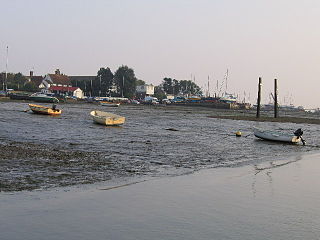
West Mersea is a small town and electoral ward in Essex, England. It is the larger of two settlements on Mersea Island, south of Colchester. The smaller settlement on the island is the village of East Mersea.

Almuñécar is a municipality in the Spanish Autonomous Region of Andalusia on the Costa Tropical between Nerja (Málaga) and Motril. It has a subtropical climate. Almuñécar lies in the province of Granada, and has around 27,700 citizens (2012). Since 1975, the town has become one of the most important tourist towns in Granada province and on the Costa Tropical; it has good transport connections and a football (soccer) stadium.
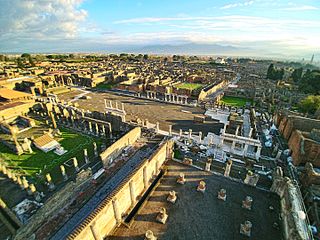
A forum was a public square in a Roman municipium, or any civitas, reserved primarily for the vending of goods; i.e., a marketplace, along with the buildings used for shops and the stoas used for open stalls. Many fora were constructed at remote locations along a road by the magistrate responsible for the road, in which case the forum was the only settlement at the site and had its own name, such as Forum Popili or Forum Livi.

The Catholic Church in Tunisia is part of the worldwide Catholic Church, under the spiritual leadership of the Pope in Rome.
Luciano Storero was born in Pinasca, Italy. He served in the Diplomatic Service of the Holy See.

Sagunto is a town in Eastern Spain, in the modern fertile comarca of Camp de Morvedre in the province of Valencia. It is located c. 30 km north of Valencia, close to the Costa del Azahar on the Mediterranean Sea.
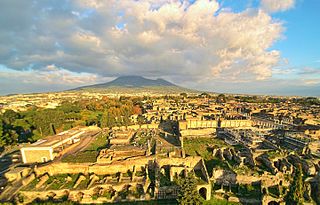
Pompeii was an ancient Roman city near modern Naples in the Campania region of Italy, in the territory of the comune of Pompei. Pompeii, along with Herculaneum and many villas in the surrounding area, was buried under 4 to 6 m of volcanic ash and pumice in the eruption of Mount Vesuvius in AD 79. Volcanic ash typically buried inhabitants who did not escape the lethal effects of the earthquake and eruption.
